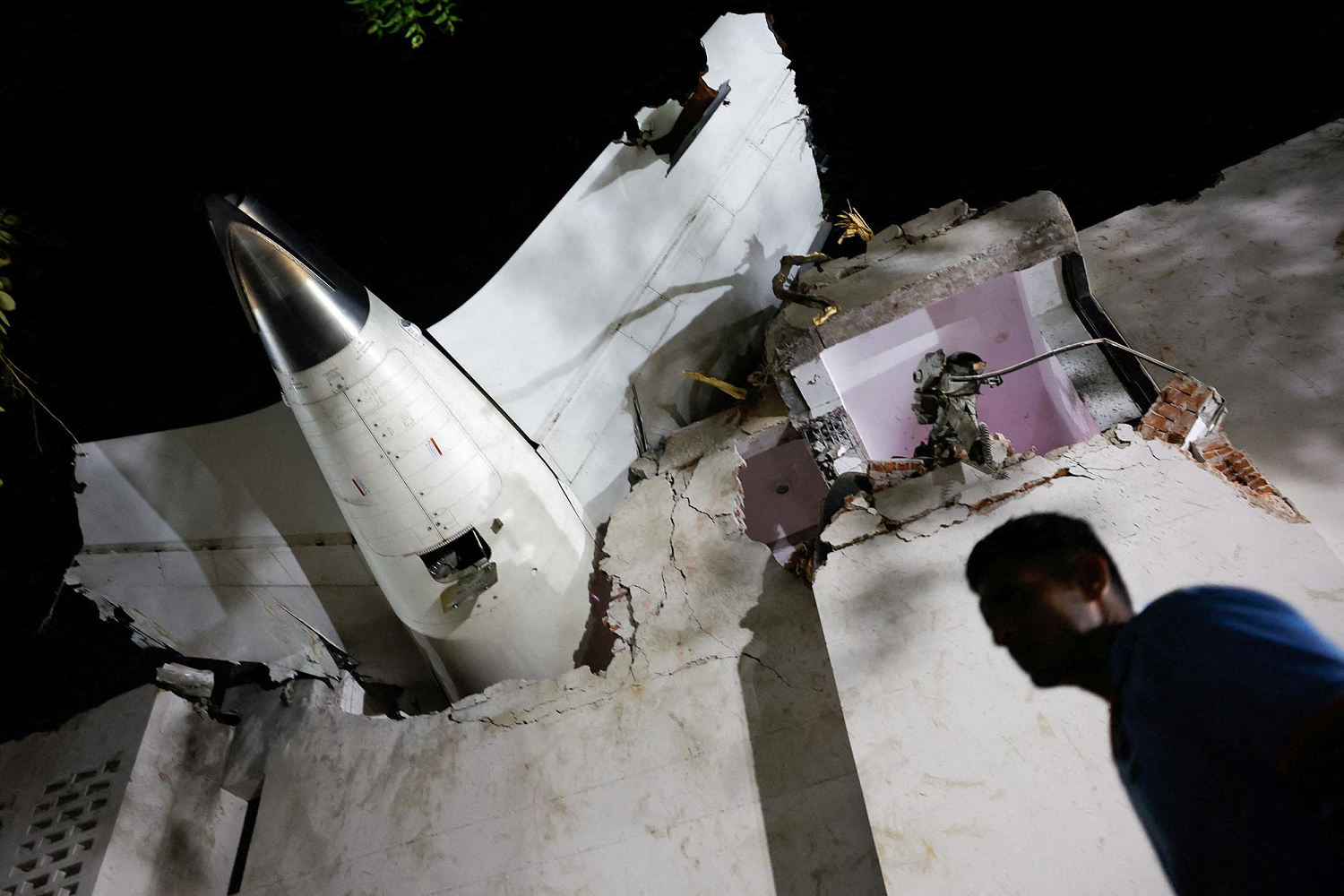Fuel switches were cut off before Air India plane crashed, preliminary report says

Fuel switches were cut off on the Air India plane that crashed and killed 270 people last month shortly after the plane took off, a preliminary investigation report released Friday said.
The report by India’s Aircraft Accident Investigation Bureau comes as the airline has been under intense pressure to answer for the crash, which killed all but one passenger on the plane and 29 others on the ground.
Fuel cutoff switches were changed from “run” to “cutoff” to engines 1 and 2 on the two-engine Boeing 787-8, a type of aircraft known as the Dreamliner, the report said.
“In the cockpit voice recording, one of the pilots is heard asking the other why did he cutoff. The other pilot responded that he did not do so,” the report reads.
The report is preliminary and a final report could take weeks. The report released Friday does not reach conclusions or recommend actions to operators or manufacturers, and the investigation is continuing.
Only one person survived the crash, British national Ramesh Viswashkumar. His brother, also on the plane, was killed.
In addition to the 241 people on the plane who died, 29 people on the ground were also killed when the plane crashed.
The London-bound Air India Flight 171 was carrying 230 passengers and 12 crew members when it crashed seconds after takeoff from Sardar Vallabhbhai Patel International Airport in the western Indian city of Ahmedabad. It careened into a building where medical students were sitting down for lunch.
After the switches were changed to cutoff, there were attempts to recover and relight, the report says.
“Engine 1’s core deceleration stopped, reversed and started to progress to recovery. Engine 2 was able to relight but could not arrest core speed deceleration and re-introduced fuel repeatedly to increase core speed acceleration and recovery,” the report reads.
One pilot then issued a distress call — “mayday mayday mayday” — and the plane lost altitude and crashed, the report says. The aircraft exploding upon impact.
It was the first crash for Boeing’s Dreamliner series of aircraft, which went into commercial service in 2011.
The investigation by India’s Aircraft Accident Investigation Bureau included members of the U.S. National Transportation Safety Board because the crash involved an U.S.-made plane. Last month investigators began analyzing the black boxes after their recovery from the crash site.
After the crash, India’s aviation watchdog, the Directorate General of Civil Aviation, ordered Air India to carry out additional maintenance on its Boeing 787-8/9 aircrafts.
But no major concerns were found, the watchdog said on June 17 in a statement.
A week later, the regulator said in a statement it had found multiple cases of “repeated defects on aircraft indicating ineffective monitoring and inadequate rectification action,” while probing several airports, including at New Delhi and Mumbai, and that it had ordered for changes to be made within seven days.
Reuters reported that Air India’s subsidiary airline, Air India Express, was also reprimanded by Indian authorities in March, and is under investigation by the European Union’s aviation safety agency for not timely changing engine parts of one of its Airbus aircraft.





